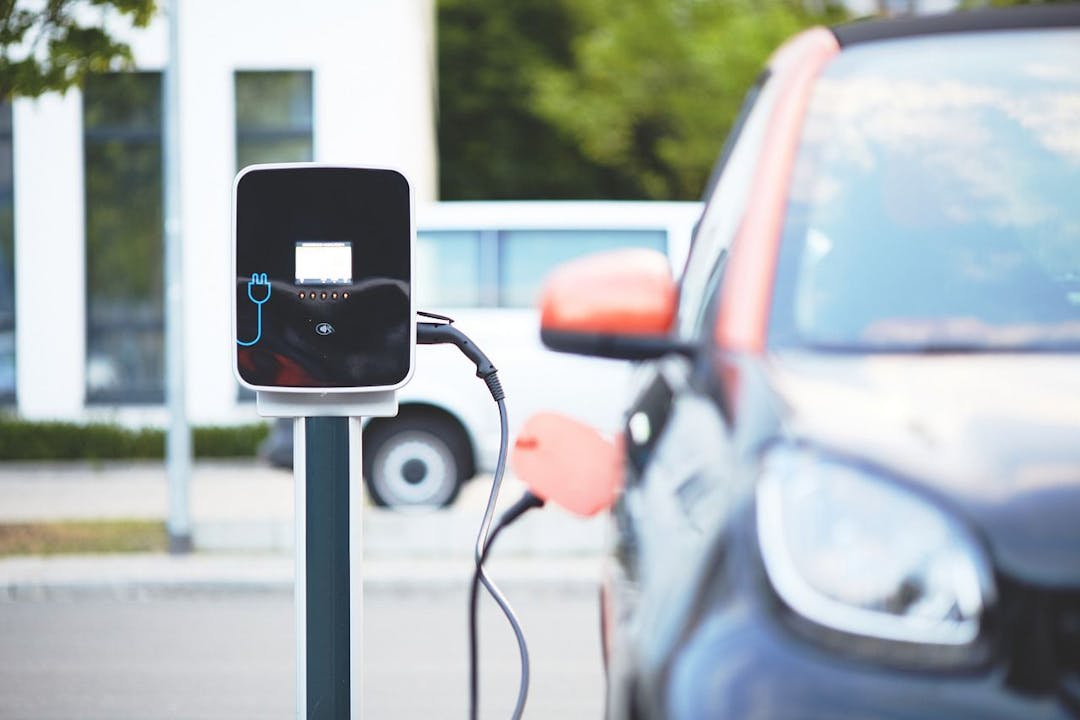Knowing the industry complexity, at Solidstudio, we thought it would be a good idea to launch a series of blog entries on e-mobility fundamentals. The articles are to shed light on some of the topics that may not necessarily be clear to everyone.
Introduction
Those who spent some time operating within the electro-mobility field already know how multi-dimensional this industry is. It connects many branches from various specializations including both hardware and software. Such interdisciplinarity leads to a very sophisticated and rich vocabulary specific only to the e-mobility. As the trade press is filled with a whole plethora of terms and abbreviations, one must be well familiar with them in order to understand what it’s all about.
We’re going to break down some of the most frequently used phrases.
The related terms will be split into categories for easier navigation.
Automotive
Internal combustion engine cars (ICE)
Internal combustion engine cars (ICE) are vehicles that run on gasoline, diesel or other fuels. This technology has been around for more than a century and is quite mature. These cars work by using the energy stored in the fuel to convert it into kinetic energy. This happens through explosions of various kinds - either precisely controlled or uncontrolled, which then turn the wheels and move the vehicle forward
Electric cars (BEV or EV)
BEV here stands for battery electric vehicle. They use electricity as their power source. An EV does not need to be plugged in and charged overnight as it can store enough electricity for a limited-length commute. These are relatively new for mass-usage but significantly grow in popularity.
Hybrid cars HEVs
A hybrid car is a vehicle that uses two or more power sources to move the car. The most common type of hybrid car is one that uses an electric motor and a gasoline-powered engine. Hybrid cars are more fuel efficient than regular cars and they produce fewer emissions. Some people choose to buy hybrid cars because they want to help the environment
Plug-in hybrid cars (PHEVS)
A plug-in hybrid electric vehicle (PHEV) is a type of hybrid electric vehicle that uses rechargeable batteries, or a plugin, to store energy. PHEVs combine the benefits of gasoline engines and electric motors, which can result in significant fuel economy improvements over traditional vehicles.
EVSE
It stands for electric vehicle supply equipment. An EVSE unit comprises two parts - a cord set with connector that plugs into your car on one end; either hardwired or pluggable on the other; and a charging station where you connect to an EV outlet. The charger communicates with the car to determine what current will be most efficient. Put simply, an EVSE here would be a charging station and its related protocols managing the charging sessions.
OEM
As much as this term is not strictly dedicated to e-mobility it occurs quite frequently in industry papers. OEM stands for: Original Equipment Manufacturer. In the electromobility world, these are usually car parts manufacturers and those who construct charging hardware.
Fleet electrification
Fleet electrification is the process of using EV's within a fleet environment to reduce greenhouse gas emissions. Fleet owners are already utilizing EVs in their fleets, as they offer cost savings and other benefits that cannot be found with traditional internal combustion engine vehicles (ICE). There are four main steps to fleet electrification: EV selection, charging infrastructure, training and support.
Connected cars
Connected cars are capable of gathering all sorts of information. From principle information, such as the speed or location, through engine status and malfunctions all the way to details such as whether the door was locked. For the collection of data, the responsibility holds the vehicle’s electronic control module (ECM). ECM is an embedded system in automotive electronics that controls one or more of the electrical systems or subsystems in a vehicle. It runs via multiple sensors and camera modules and consists of many subsystems which combined together make up what we know as a car's computer. You can learn more about connected cars here.
Charging-related terms
Charging session & charging point
Charging session is simply the time the car spent charging. All the way from the very first plug-in to the payment for finalized charging.
Charging point is nothing but a charging station. Put simply, it’s the hardware that allows EV to be charged. It can be deemed as a charging location.
Charging infrastructure: public vs private
Public EV charging networks are those available to any EV user that happens to be in need of charging a car. It can be:
- Rest areas and parking lots along highways, state routes, interstates
- Shopping malls and retail locations
- Workplaces that allow employees to charge their EV while they work (provided by employers)
- Community spaces such as parks or libraries. They usually have a few chargers on site, but they are not intended for EV owners to use
Whereas, private charging infrastructure is made available only to a specific group of individuals. Such scenarios include:
- Charging stations for drivers of a specific company/organization/residential complex. They can also be privately owned and only available for residents of particular neighborhoods (e.g., condominiums)
- Home chargers
Worth mentioning is also the differentiation between open and closed charging networks. You can learn about it here.
EV charging levels
EV charging levels are like gas stations for electric cars. There are three EV charging levels: slow, medium, and fast. Slow EV charging can take up to 20 hours, while medium EV charging can take up to 12 hours. Fast EV charging can take as little as 30 minutes. The different EV charging levels allow drivers to choose the best EV charging method for their needs. EV charging levels are important to know because they can help drivers plan out their trips. For example, if a driver knows that they will be driving in a slow EV charging area, they can plan to charge their car at the end of their trip. This will help them avoid running out of battery power while driving. EV charging levels can also help drivers know how much EV charging time they will need for a trip. EV drivers should always check the type of EV charger in their car and where it is located to ensure that they are able to charge at all EV chargers when driving across different locations.
Lithium-ion batteries
Lithium-ion batteries are the most commonly used battery in electric vehicles, and for good reason. They offer a high energy density that can power a car with increasing speeds up to about 200 mph. Lithium ion batteries use a process known as intercalation where lithium ions move from the negative electrode to the positive one through an electrolyte. When you discharge them, these same charges come back around and vice versa for charging.
Range anxiety
Range anxiety is the fear of running out of charge while driving an electric vehicle (EV), and it's one of the main reasons people are hesitant to switch to EVs. While range anxiety is a valid concern, it's becoming less and less of an issue as EV technology improves.
Bidirectional charging, V2G
V2G stands for vehicle to grid.
Bidirectional charging is a process that allows EVs to send power back to the grid. This can happen either through a bi-directional charger or by using vehicle-to-grid technology. Bidirectional charging is beneficial because it helps stabilize the grid and manage energy consumption more efficiently. Additionally, it can help EV drivers earn money from energy not used for driving.
Energy suppliers and the grid
An energy supplier is a company that supplies electric power to customers. The company may be an electricity generator, or it may purchase electric power from generators and sell it to consumers. Some energy suppliers also own and operate electric transmission and distribution systems. Energy suppliers are important players in the electric grid because they help ensure that there is enough electric power available.
The electric grid is a network of electric power lines and associated equipment that transmits electric power from suppliers to consumers. The grid includes generators, transmission lines, distribution systems, and loads. The electric grid helps ensure that there is enough electric power available to meet the needs of consumers.
EV Charging Management Software and Services
E-mobility Service Provider (EMSP)
In short eMSP is a unit that provides charging services directly to EV drivers and manages the payments for charging sessions. It should be free to say that eMSPs are responsible for the end-user care. They deliver the possibility to locate a charging point, get it to run and finalize the transaction. It’s also up to them to establish the charging network monetization ( payment methods, adequate tariffs and real-time billing) and customer satisfaction, ensuring the best client experience. One can say that eMSP’s are responsible for ensuring that products of CPO’s are ready to be used by EV drivers.
To see more about EMSP’s and learn the difference between them and CPO’s, we highly recommend you to take a look at our other article, where we go into more detail. Click here.
Charge Point Operator (CPO)
Charge Point Operators are responsible for the construction of the charging stations. They are focused on developing and maintaining the charging infrastructure, which includes hardware installation, ensuring proper connectivity of charging points and their service. CPO’s main point of interest is keeping the technicalities up and running and, if needed, reacting to possible malfunctions in real-time. This is specifically important as a vast majority of charging stations should stay available 24/7.
CPO’s also care about the energy management and seamless connectivity to the grid, this includes i.e. energy storing or utilization of renewable sources of energy.
To see more about CPO’s and learn the difference between them and EMSP’s, we highly recommend you to take a look at our other articles, where we go into more detail. Click here. Or here.
Open Standards
Common set of policies to guide interoperability among e-mobility service providers / charge point operators. These are APIs created to facilitate charging services. They also operate as a hub, connecting CPOs and eMSPs. Once a company is compatible with open standards, it becomes open for integration with any other comrade being already assigned.
Open Standards are a big topic within the industry as they play a crucial role in charging network unification and availability. We have published a much more in-depth look into what they are and how they work. You can learn about OCPI & OCHP here. And about OICP & eMIP here.

